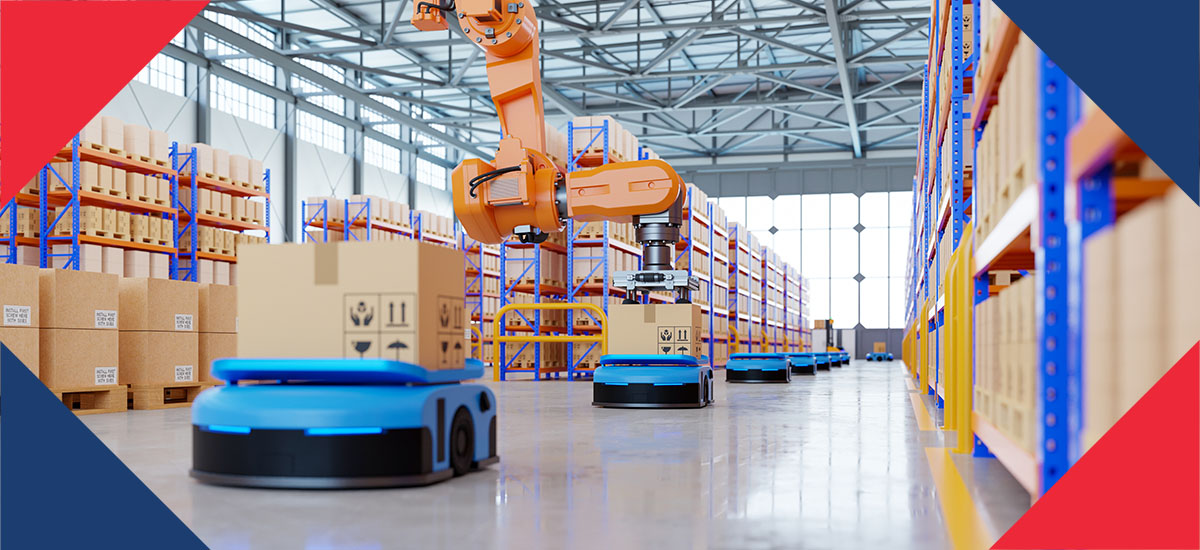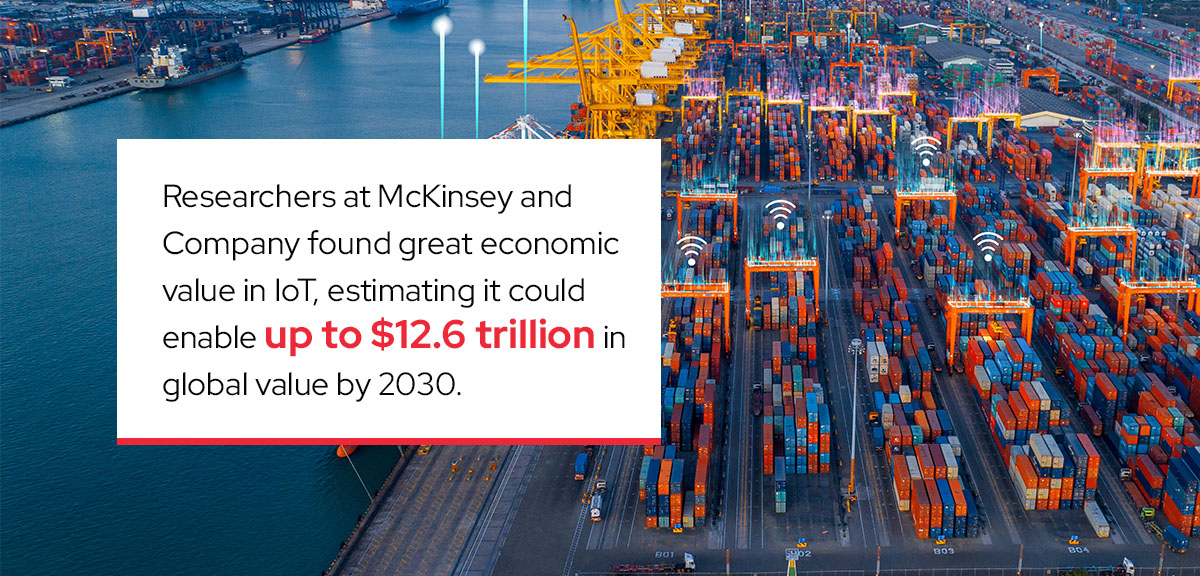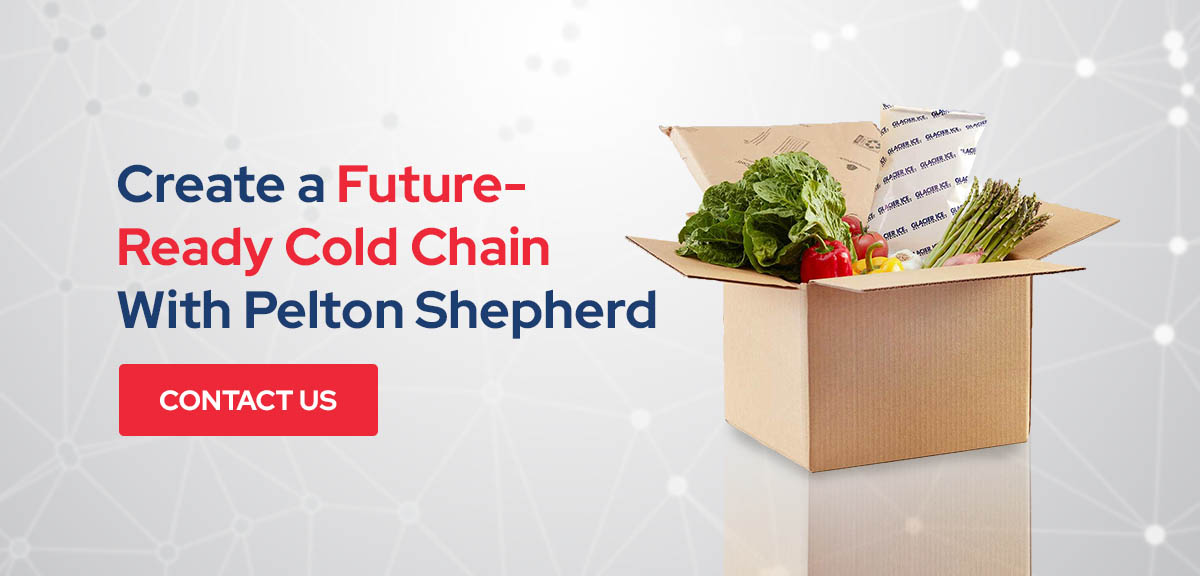With growing e-commerce sales in the pharmaceutical, food and beverage industries, cold chain businesses face a promising future. Consider that the worldwide meal kit delivery market is expected to reach over $16 billion by 2029, with the United States generating the most revenue.
The B2C online pharmaceutical market is also expanding. Researchers expect global revenue in online pharma to increase by nearly 24% by 2029.
Still, despite growing revenue, cold chain logistics remains complex and abounds with challenges, including managing the effects of geopolitical conflicts, unforeseen weather events, inflation and increasing sustainability pressures. To help mitigate some of the industry’s inherent challenges, we can expect greater emphasis on the following cold chain trends moving forward.
1. Prioritizing Sustainability Initiatives
Many of today’s consumers care about sustainability and want companies to care, too. According to McKinsey and Company, 43% of consumers say it’s very or extremely important to consider the environmental impact of packaging when deciding whether to purchase something. Additionally, most consumers claim they will pay more for sustainable packaging, with up to 7% willing to pay above 10% more.
With scientists expecting global temperatures to continue rising for many years, mainly due to greenhouse gases (GHGs), consumer demand for eco-friendly products and packaging will likely continue to grow.
Cold chain businesses also face increasing pressure from regulatory bodies, various organizations and industry best practices to adopt more sustainable processes and reduce their carbon footprint. For example, more than 9,000 companies worldwide are participating in the Race to Zero, aiming to halve global GHG emissions by 2030.
Emerging regulations also drive environmental, social and governance initiatives. In the United States, certain companies must adhere to Scope 1 and Scope 2 reporting requirements under The Enhancement and Standardization of Climate-Related Disclosures for Investors rule. Voluntary initiatives and proposed rules place further pressure on companies.
Businesses can prepare for new regulations by assessing their current processes, understanding climate-related risks and identifying strategies to decrease GHG emissions. Some ways to move sustainability efforts forward include:
- Implementing recyclable and cost-effective solutions, like eco-friendly refrigerants, into their shipping process.
- Using technology, like AI-powered route optimization tools, to plan the most efficient routes possible.
- Keeping shipments cold with gel packs rather than electric refrigeration.
2. Adopting Emerging Cold Chain Technologies
Cold chain shippers have an array of temperature monitoring devices and sensors to choose from, and the options keep getting better — and smaller — as technology evolves. For instance, Internet of Things (IoT) sensors continue to get smaller, easier to implement and less expensive. With IoT sensors, decision-makers can see product locations, receive estimated arrival times, and monitor temperature and humidity. The data collected via IoT devices is stored in the cloud, allowing companies to monitor this information remotely and make timely decisions.
As businesses realize the benefits of IoT and other types of technology, we can anticipate increased adoption. Researchers at McKinsey and Company found great economic value in IoT, estimating it could enable up to $12.6 trillion in global value by 2030. We can expect other tools, like digital twin technology, to be used in conjunction with IoT sensors and real-time data in the future, augmenting collaboration and allowing fast decision-making.
3. Achieving Transparency With Blockchain Platforms
As cold chain shippers know, transparency is important to delivering safe, high-quality medications, foods and other perishable products. Still, achieving transparency isn’t always easy. According to a 2023 KPMG report, 43% of global supply chain companies claim no or little visibility into their tier 1 suppliers. However, 87% of companies consider visibility critically important. This disconnect indicates a growing need for more transparency in worldwide supply chains. Blockchain technology can help.
Ledger-based blockchain platforms create an accurate database of transactions as products move through the cold chain, from factory to consumer. It eliminates data silos, and its unique design prevents data from being tampered with.
With blockchain technology, all stakeholders can trace and track shipments within a decentralized system and trust data integrity. Overall, businesses can use blockchain technology to foster collaboration, prevent bottlenecks and ensure product quality. It may also help combat the fast-growing counterfeit pharmaceutical market.
KPMG expects investments in digital ledger technology, like blockchain, to grow over the next several years.
4. Building Resilience and Adaptability
Today’s cold chain shippers must be able to quickly pivot when challenges arise to avoid stockouts, stay competitive and meet consumers’ demand for speed. Yet, many companies don’t believe their supply chain is well-prepared for future disruptions. According to the KPMG report, 47% of the companies surveyed say they are vulnerable to disruption.
With that in mind, we expect cold chain businesses to emphasize building resilient and adaptable supply chains over the coming years. For instance, some companies might delve deeper into advanced data collection and analytics to improve their forecasting capabilities and predict consumer demand. We may also expect to see a movement toward greater collaboration with supply chain partners and localizing logistics to deliver products faster and ensure accurate temperature control.
5. Leveraging Automation and Robotics
A growing number of businesses are leaning into automation and robotics to improve operational efficiency. For example, 37% of survey respondents in the KPMG report have already replaced manual labor with automated or robotic technology in their warehouses. Sixty-three percent believe that the many repetitive tasks humans complete will eventually be replaced by automation.
KPMG researchers expect to see a high level of robotics and automation used in supply chains, particularly in warehousing, distribution and the last mile. This technology can be used to complete mundane tasks like packing, stacking and sorting products. Collaborative robots, or “cobots,” may also become more commonplace in supply chains, helping humans pack and move products efficiently.
Cold chain businesses may use robotics and automated technology to handle and pack temperature-sensitive products because they reduce the risk of human error. With the help of automation, businesses in any industry can expect to ship their products faster, and they can reserve more complex tasks, like decision-making, for their employees. With a mix of manual and automated labor, businesses of the future will be equipped to scale faster.
Create a Future-Ready Cold Chain With Pelton Shepherd
The future of the cold chain industry is an exciting one. That said, it’ll likely require a willingness to integrate new technologies and adopt sustainable practices to stay competitive. Partnering with reliable suppliers can help businesses overcome unexpected challenges and smoothly transition into the future.
At Pelton Shepherd, we’re ready to help your cold chain enterprise prepare for the decade ahead. We design and manufacture innovative, reliable and cost-effective refrigerant solutions, including sustainable gel packs, to prevent temperature excursions in the last mile.
We also offer a Conditioning Operations, Logistics and Delivery (COLD) program, which involves forecasting your gel pack needs, pre-conditioning them and sending them to your facility when you need them. With COLD, you won’t need to reserve space or energy to store gel packs on-site. You can also count on predictable fulfillment times.
Contact us today to learn more about solutions or order your supply of high-quality gel packs.




